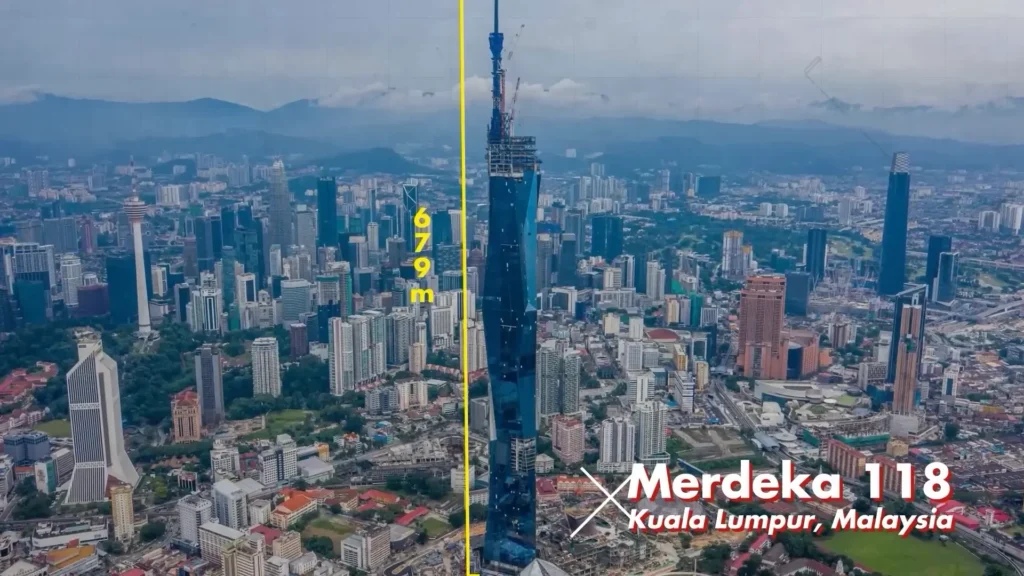The Mystery of Burj Khalifa: A Towering Achievement and Its Unmatched Legacy
The Burj Khalifa, standing at an astonishing 829 meters, is not just the tallest building in the world; it embodies the Mystery of Burj Khalifa, an emblem of human ambition, innovation, and architectural prowess. Its construction began on January 6, 2004, and it took approximately 5.5 years to complete, with the official inauguration taking place on October 1, 2009. This blog post delves into the story behind the Mystery of Burj Khalifa, the challenges it overcame, and the implications of its unmatched height.
Setting the Record
Before the Burj Khalifa, the title of the world’s tallest building was held by Taipei 101 in Taiwan, which stood at just over 500 meters. The ambition for the Burj Khalifa was to build a structure that was not only taller but significantly so—62% taller than its predecessor. This pursuit is part of the Mystery of Burj Khalifa—a bold move in the realm of skyscrapers, where previous records were typically surpassed by margins of 5% to 19%. The vision was clear: create a building that would set a record so high that it would discourage attempts to break it.

A Historic Journey
The journey to construct the Burj Khalifa was marked by several milestones. The initial height was proposed at around 550 meters, but as the project progressed, the design evolved, ultimately reaching its final height of 829 meters. This evolution is a key aspect of the Mystery of Burj Khalifa, driven not only by engineering possibilities but also by the desire to create a centerpiece for Dubai’s downtown area, transforming it from a small fishing village into a global tourism hub.
Innovative Design and Engineering
The Burj Khalifa’s design incorporated several innovative features that allowed it to reach unprecedented heights. The building’s unique Y-shaped structure, which resembles a tripod, is integral to the Mystery of Burj Khalifa as it was designed to withstand the high winds encountered at such altitudes. This design was made possible through the use of the Buttressed Core system, a structural innovation pioneered by the building’s structural engineer, Bill Baker. This system effectively distributes the forces acting on the building, enabling it to stand tall without compromising safety.
Challenges of Height
Building such a tall structure comes with a unique set of challenges. The Burj Khalifa had to support its immense weight while also being resilient to strong winds, adding to the Mystery of Burj Khalifa. The foundation consists of 192 concrete and steel columns that extend 50 meters into the ground, ensuring stability. Additionally, the building features pressurized and air-conditioned refuge areas every 25 floors to provide safety in emergencies.
Technological Marvel
The Burj Khalifa is not only an architectural wonder but also a technological marvel. Its exterior boasts the world’s largest LED screen, enabling it to display light shows and even movie trailers. The innovative use of technology in the Mystery of Burj Khalifa enhances its status as a landmark and a tourist attraction. With over 1.2 million LED lights, the building can transform into a giant canvas for artistic displays.

The Economic Impact
The Burj Khalifa has significantly impacted Dubai’s economy, intertwining with the Mystery of Burj Khalifa. It has attracted international attention, leading to an influx of tourism and foreign investments. The property prices in the surrounding downtown area have skyrocketed, with the initial construction cost of $1.5 billion recouped through the economic activity generated by the building. Today, Dubai stands as an international hub for business and tourism, largely due to the iconic skyscraper.
Future Aspirations
Despite the Burj Khalifa’s record, there are ambitions to construct even taller buildings, adding another layer to the Mystery of Burj Khalifa. The Jeddah Tower in Saudi Arabia aims to exceed 1 kilometer in height, while the Dubai Creek Tower is planned to be between 838 and 1,300 meters tall. However, both projects have faced delays and uncertainties, highlighting the challenges of funding and political stability associated with such ambitious endeavors.
Limitations and Challenges Ahead
While the potential for taller buildings exists, several limitations remain, contributing to the Mystery of Burj Khalifa. The structural integrity of materials like concrete and steel poses challenges for skyscrapers exceeding 1.5 kilometers. Additionally, human factors such as acclimatization to altitude and the socio-economic feasibility of such projects present significant hurdles. As of now, the Burj Khalifa remains unmatched, with its innovative design setting a high bar for future skyscrapers.
The Legacy of Burj Khalifa
The Burj Khalifa is more than just a building; it symbolizes what humanity can achieve through creativity, determination, and collaboration. The Mystery of Burj Khalifa will continue to inspire architects and engineers worldwide. Its record may remain unbroken for the foreseeable future, but the spirit of innovation it embodies continues to fuel ambitions for the future. As we look to the challenges presented by height, we must consider not only advanced technologies but also a rethinking of how we approach the design and construction of skyscrapers.
